I tried Games Workshop’s new drill, knife, mouldline remover and super fine detail cutters. Are the new Citadel tools worth their money or are there better and cheaper alternatives? Let’s find out in this review.
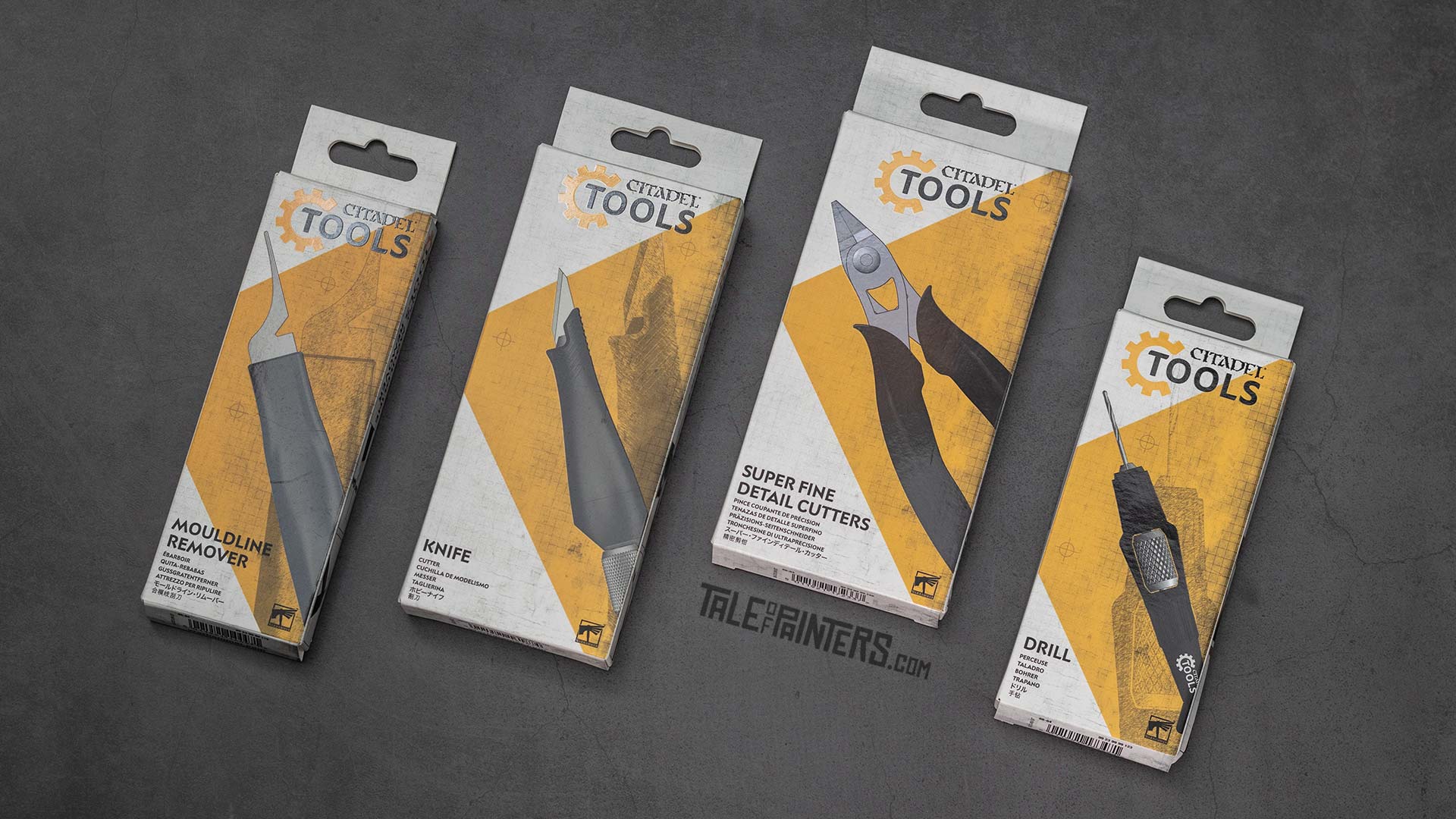

You can’t argue that Games Workshop is constantly trying to come up with new revolutionary hobby products, remember Contrast paints or… the uh rotating pistol grip spray stick holder with rubber bands? Well, the new drill, knife, mouldline remover and super fine detail cutters trade the fancy brushed metal design of the former tool range for more utilitarian and hopefully more ergonomic black plastic bodies. So good, so… unexciting? And did I mention they’re also more expensive?
Well, let’s see whether the four new hobby tools are still successful upgrades or whether you get more for bang for your buck from other manufacturers.
New Citadel Mouldline Remover review
Let’s start with the new mouldline remover tool. To be honest, I wasn’t a big fan of the old Citadel mouldline remover. I found the blade was just too large for anything other than tanks and large scenery pieces, and the (for safety reasons) rounded tip made it impossible to reach into tight spots.
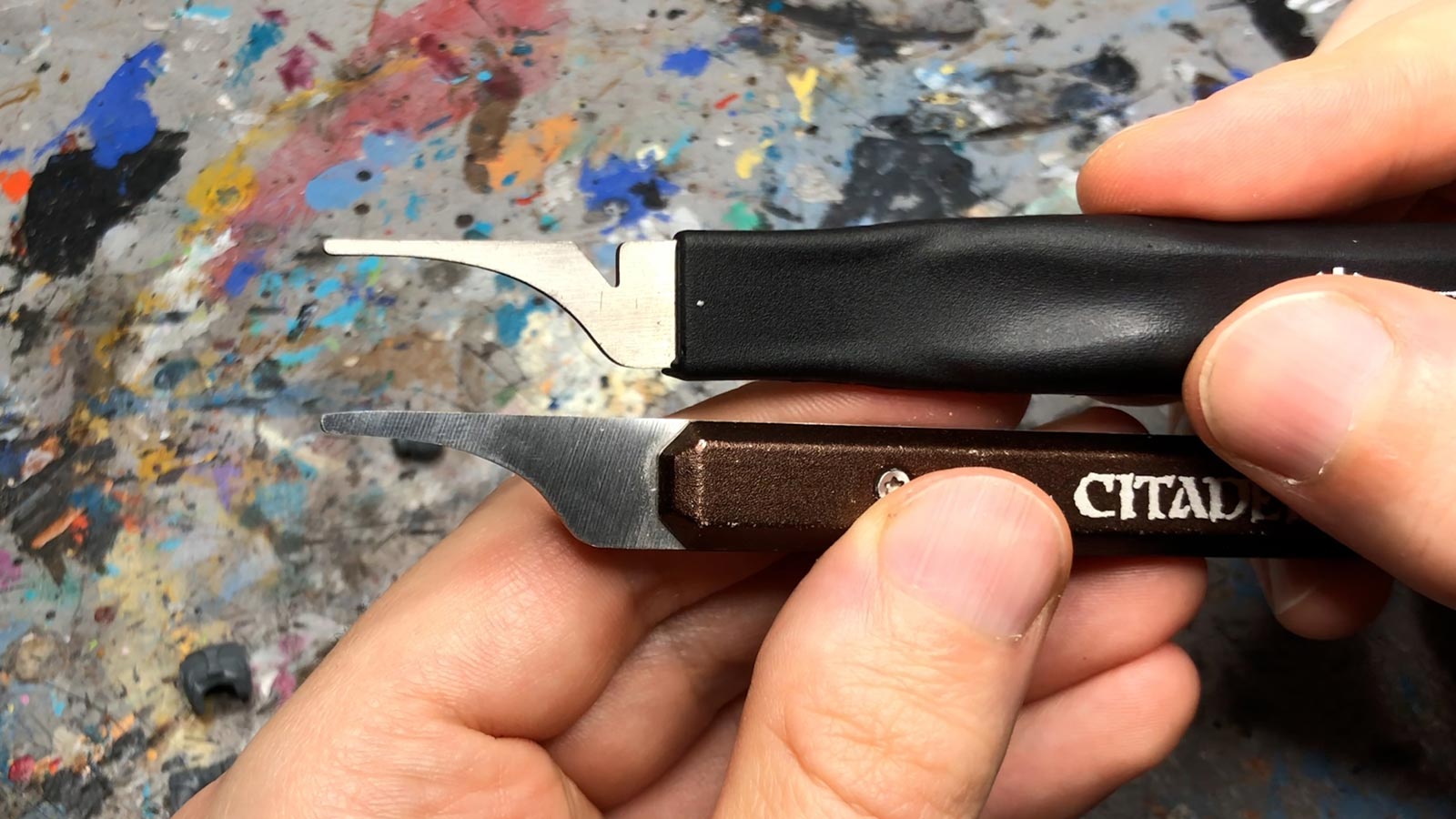

At first glance, the blade of the new mouldline remover tool is a massive improvement. The tip is still rounded, but the blade is much thinner and longer, which makes it actually feasible for cleaning infantry models. They also added a notch to tidy up base rims, but honestly, that’s quite gimmicky and not really worth mentioning. However… the blade is blunt. Like really blunt. Much blunter than my old Citadel mouldline remover after years of (ab)use.
The alternative
I still prefer my Seam Scraping tool from Micro-Mark, as its triangular pointed blade reaches places even the upgraded mouldline tool doesn’t. It’s very sharp, yet the triangular shape prevents leaving dents in the plastic, which can easily happen with a flat blade. You can get it over at Micro-Mark’s website.


New Citadel Knife review
Next, we have the new Citadel knife. The former Citadel Knife looked fancy but was very overpriced considering you could get a similar scalpel knife with a metal handle from X-acto for about 4 to 5 quid.
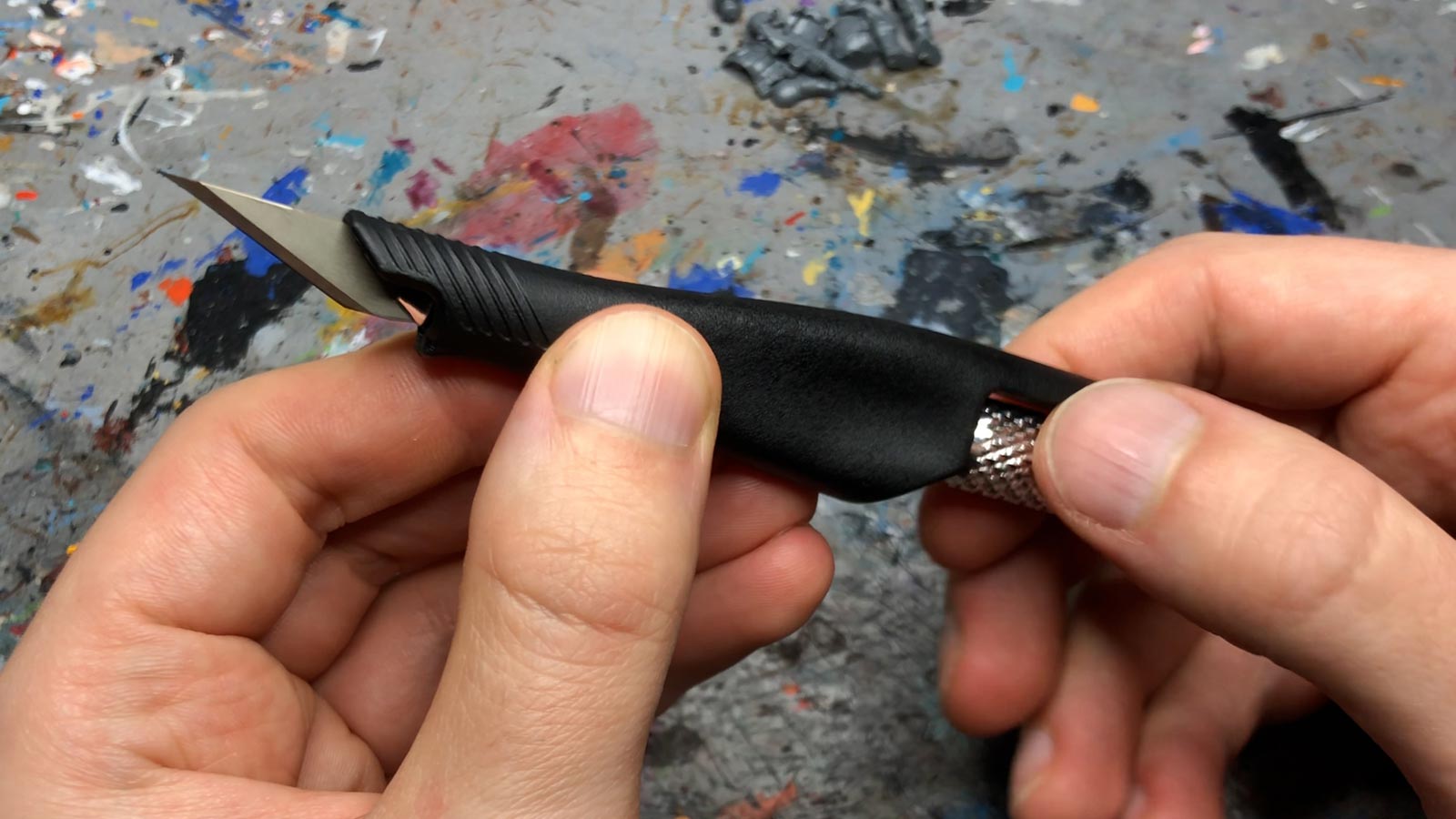

The new knife is made of plastic like all the new tools, but has a more ergonomic shape. What I particularly like, and what I haven’t seen before in any other scalpel knife, is how the handle extends over the top of the blade. This makes it easier to apply pressure when cutting without having to worry about the blade breaking. I think that’s pretty ingenious.
Otherwise, it is a lot of plastic for a lot of money. 6 blades of decent quality are included and the knife is compatible with other brands’ scalpel blades as well.


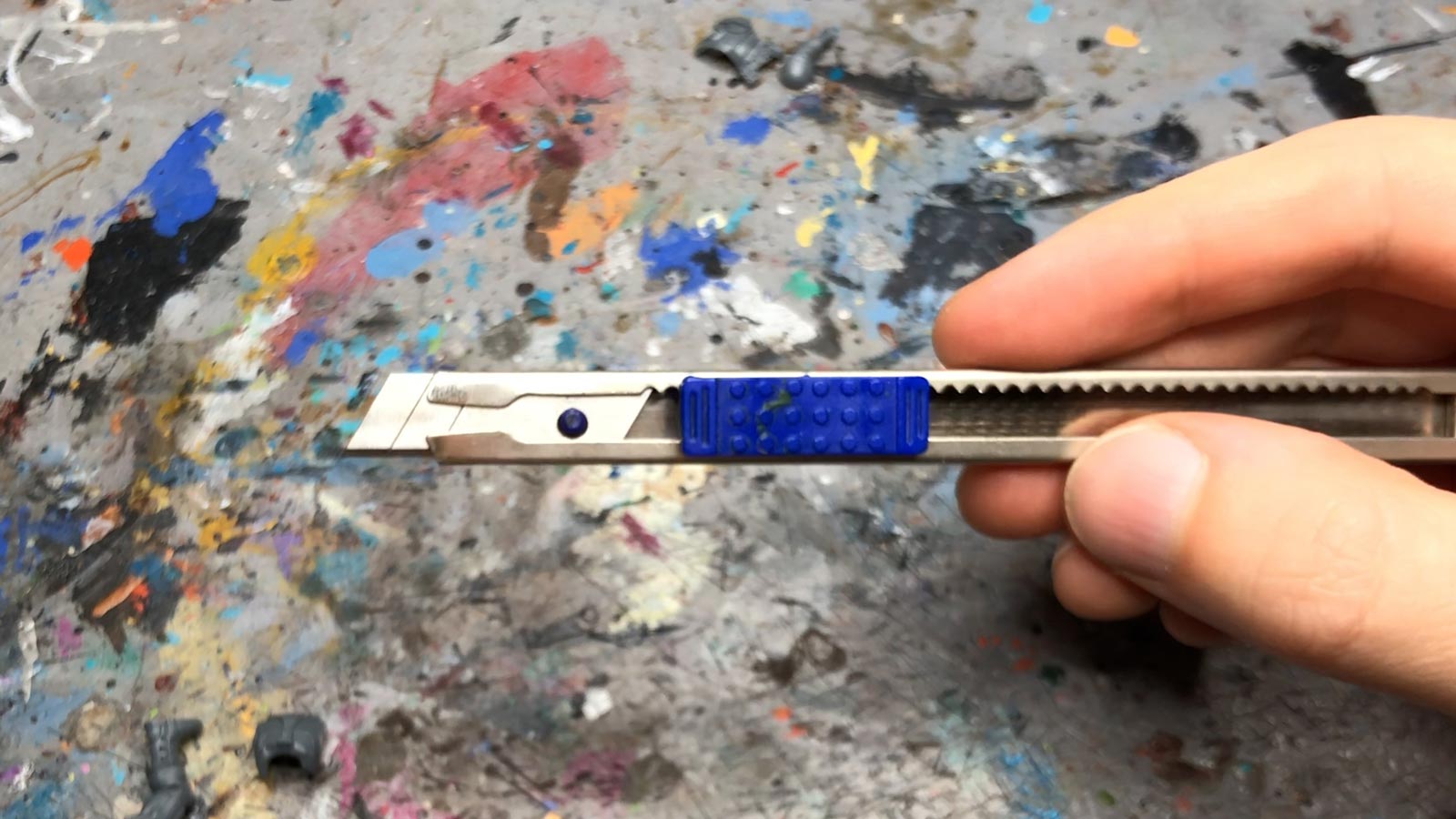

Personally, I use scalpel knives only for scraping mould lines, for actual cutting I prefer a knife with snap-off blades, which are more economic than buying replacement scalpel blades all the time. Just avoid the super cheap plasticky ones you usually get in multi-packs, they’re crap. Having said that, I approve of the design of the Citadel knife, but yeah, it’s expensive.
The alternatives
As mentioned before, you can get scalpel knives with different handle shapes for just a few quid at your local craft shop, and if you want to stick what you can find in a hobby store, the Vallejo knife does the job as well. In general, I recommend spending more on high-quality brand-name blades than on fancy handles, my favourites are No 11 blades from X-acto, as these are much sharper (and stay sharper longer) than cheap no-name blades.
New Citadel Drill review
Well, the drill works – if you have large hands. For smaller hands like mine, the bit-securing barrel is placed exactly where your fingertips will rest. This makes turning the drill really uncomfortable and unintuitive, and the two plastic fins are more of a hindrance than a help. I found it pretty much impossible to find a grip that felt comfortable and safe.
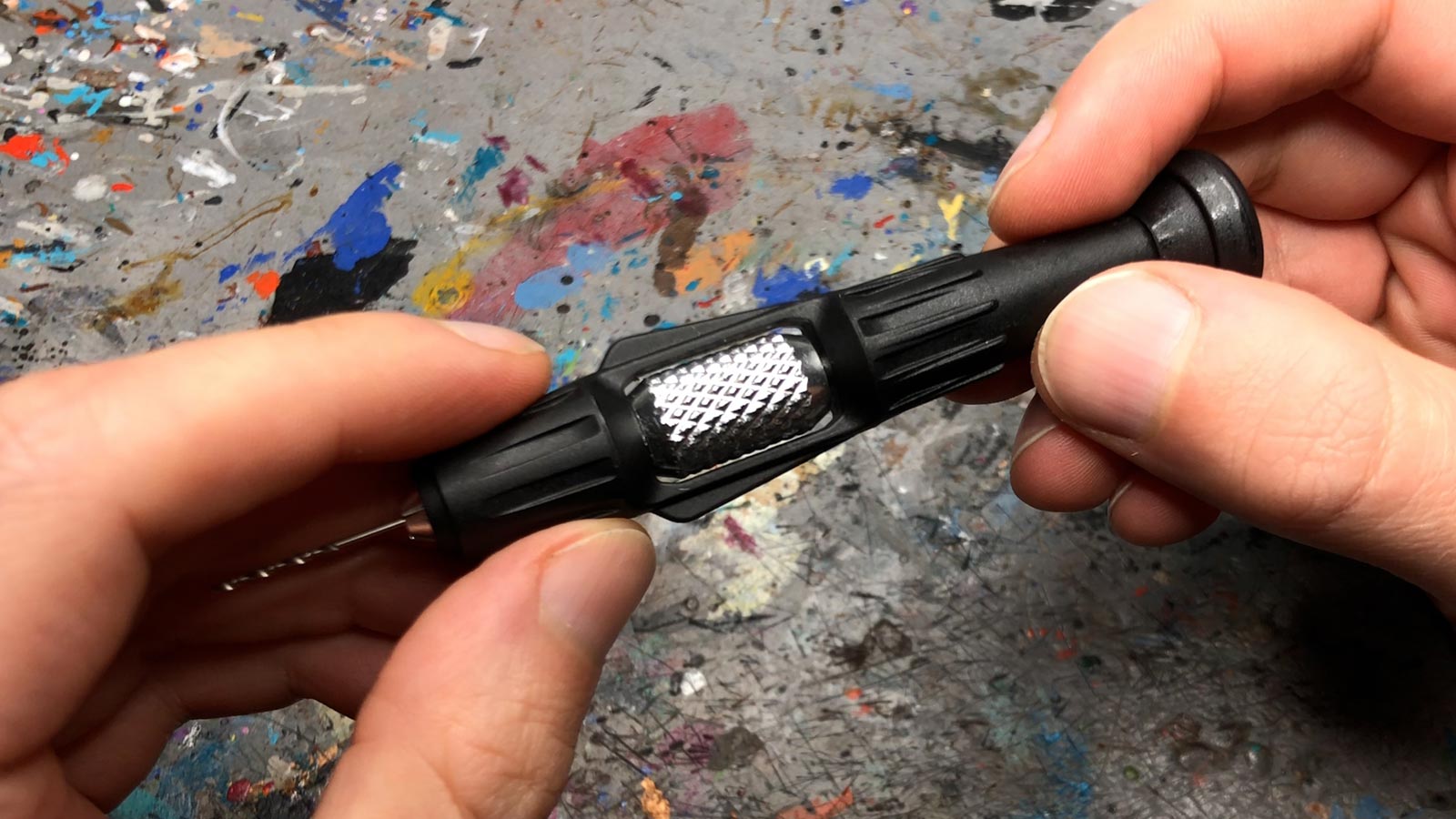

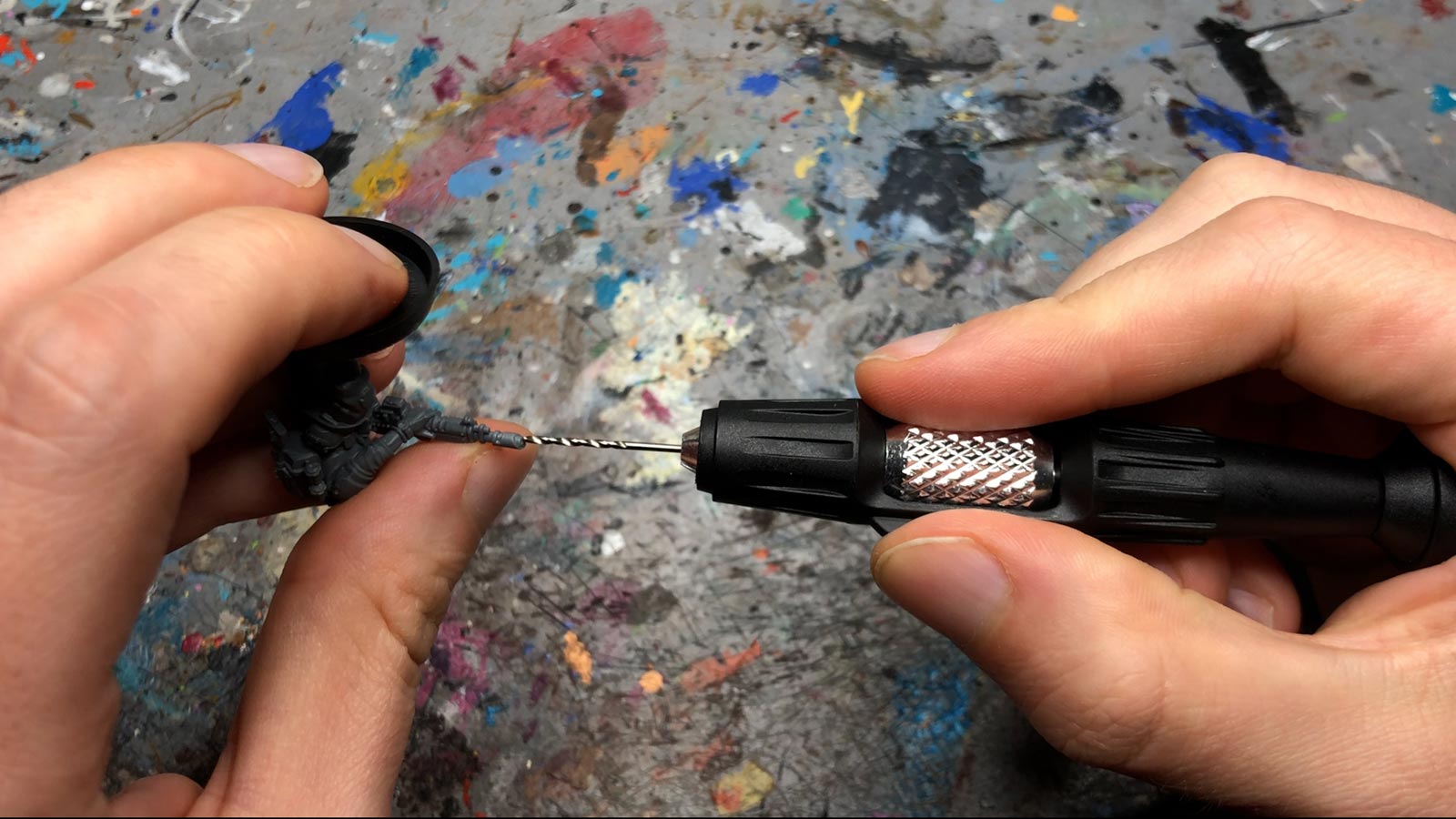

The new Citadel drill has two bits of 1 mm diameter and two bits of 1,5 mm diameter, so you’ll have a spare in case you break one. Unfortunately, only one drill chuck is included, so no drill bits larger than the 1.5 mm supplied will fit, which is another shortcoming of the design.
The alternative
If you want to save money, you can of course check out other manufacturers, as making a good miniature hand drill isn’t exactly rocket science. The Vallejo pin vice is very suitable for smaller hands, but it only has two drill heads, so you should factor in an extension set. The Army Painter drill has an eye-catching metallic red colour but I found it more suitable for larger hands as it’s quite large. Both products are less than half of the Citadel Drill.
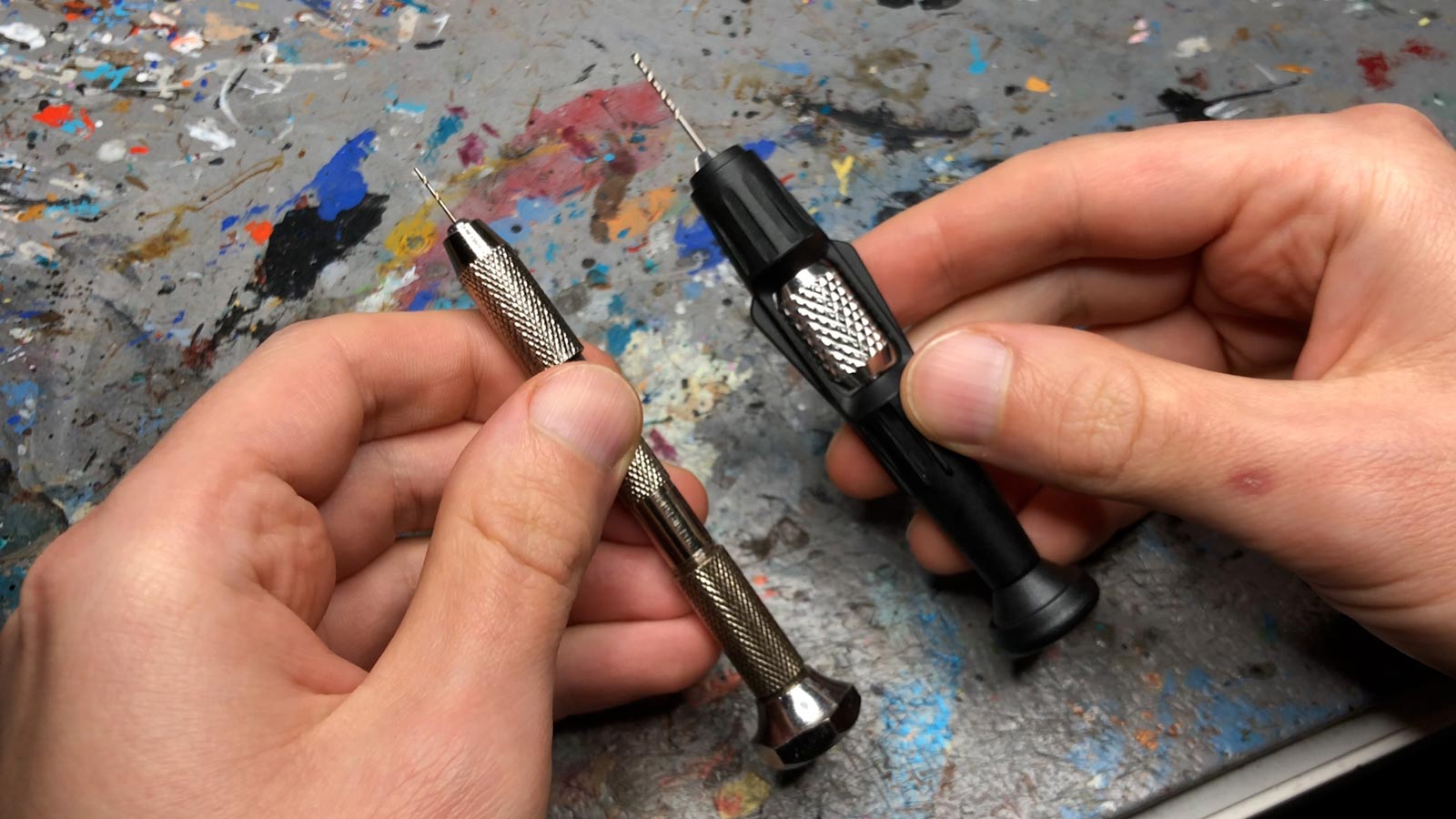

New Citadel Fine Detail Cutter review
Last but not least, we have a look at the new Fine Detail Cutter. Unlike the previous metal version, the new cutter has black plastic handles, while the jaws are once again a scissor-style dual-blade design. Apparently, there is an innovative stopping mechanism, but I have not noticed anything extraordinary in this regard. The cutter seems quite big and chunky, perhaps an advantage if you have rather large hands?
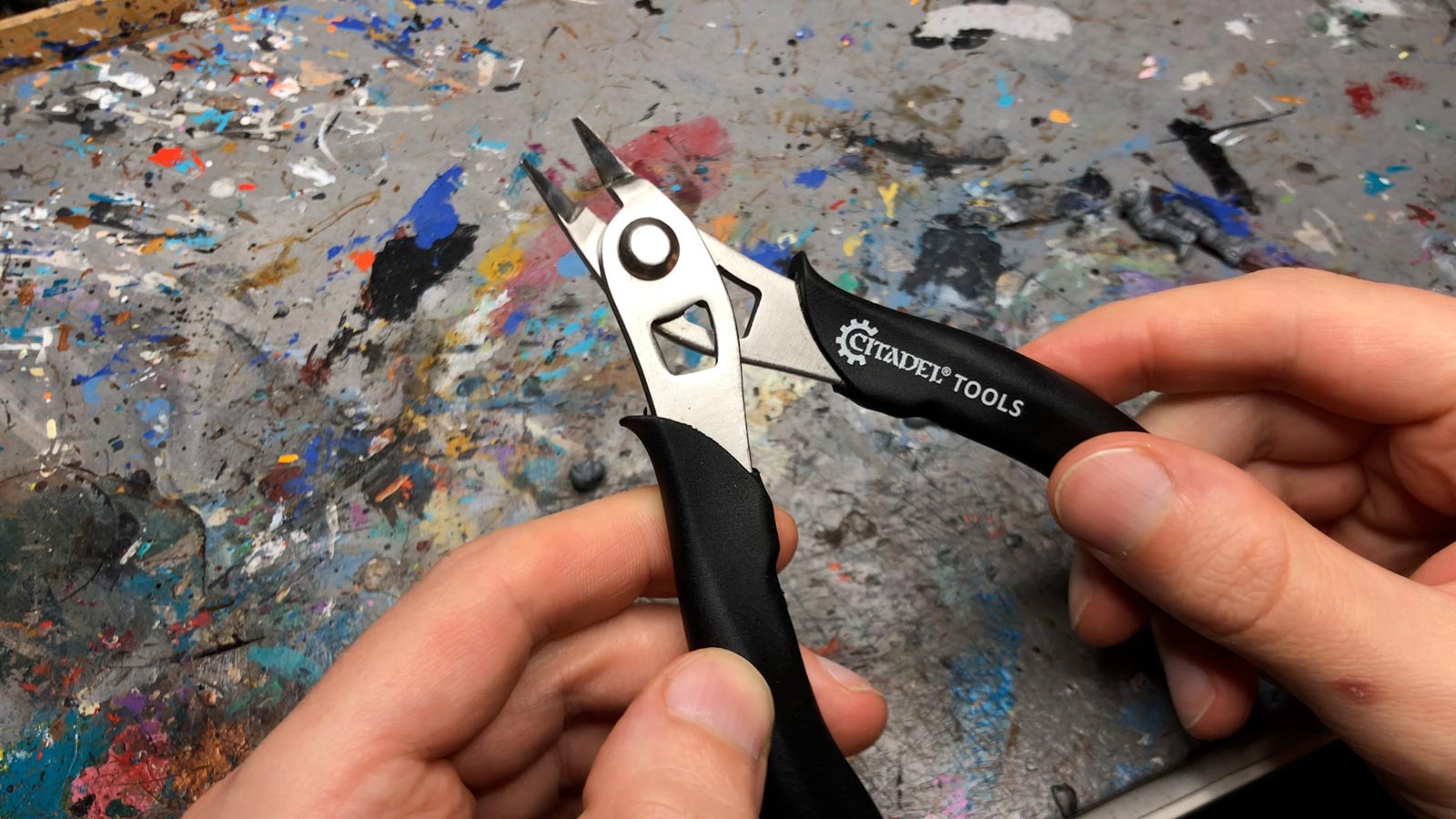

The sharpness is average, the cuts are alright, but I found it difficult to get really close to the components, so there was still a lot of excess plastic I had to cut away. That’s probably because the blades are still rather large, which makes it hard to reach tight areas in a sprue. Still, the build quality is pretty decent, but for the price they’re asking, I would probably invest in a pair of single-blade nippers.
Dual vs single-blade
At this point, I would like to make a quick detour to explain the different types of sprue cutters.
Most budget cutters have dual-blade jaws. The scissor-style blades tend to be made of cheaper steel and are often rather bulky and not very sharp. Since the jaws pinch the components from both sides, they put more stress on the plastic, resulting in less clean cuts. On the plus side, dual-blade nippers are quite durable and can cut thicker pieces of plastic without a sweat.
Single-blade nippers are blunt on the other side, so the cut is made from one side only, like a knife, which puts less pressure on the plastic. They are usually more expensive as the blades are made of higher-grade forged steel, which means the blades can be finer and sharper. This makes it easier to reach even the narrowest spots in a sprue and makes for cleaner cuts closer to the components that require less tidying up. For this reason, they are generally deemed superior to dual-blade nippers. Though the disadvantage is that the finer blades are not as robust. If you cut thicker pieces of plastic or apply too much force, they can bend or misalign over time, and if you drop them, they can break.
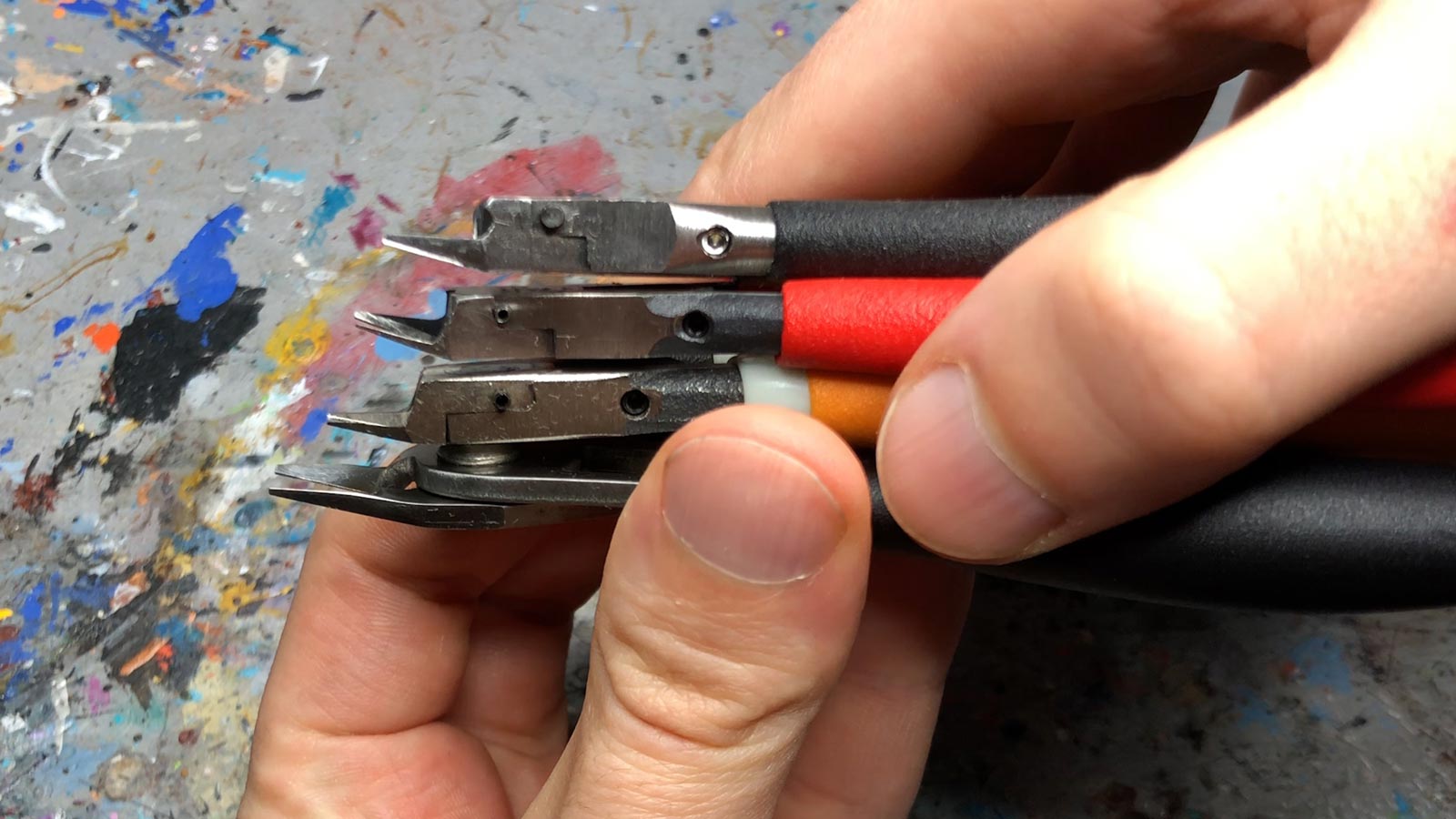

Here you can see the new Citadel Cutters in comparison with the Ultra Fine Cutting Nippers from Green Stuff World (black), RGG Precision Nippers (orange), and DSPIAE ST-A 3.0 (red). See how much smaller and thinner the blades are in comparison.
By the way, you can find a more detailed comparison of 8 hobby grade cutters and nippers over on my Patreon.
The alternatives:
If you are still using a pair of cheap and worn-out sprue cutters, I strongly suggest investing in a better pair of nippers. It makes clipping off components so much more pleasant. The Ultra Fine Single Blade Nippers from Green Stuff World are the best value for money overall, with a price between 15 to 20 Euro. If you have a bit more budget for your hobby to spend, I recommend either the single-blade Redgrass Games (which I reviewed here) or DSPIAE ST-A 3.0 nippers for their superior sharpness and build quality, depending on which you can get more easily in your region. You can keep the Citadel Cutter as a backup for rougher work if you got the extra money to spend, but some mid-level 20 quid Tamiya cutters or any entry-level Gunpla nippers might do the heavy lifting for cheaper.
Verdict & value
And this concludes my review of the new Citadel Hobby tools. I would like to see the good in the new Citadel tools, but none have completely convinced me – except for the Hobby Knife. I probably wouldn’t have bought it for myself, but now that I have it, I grew quite fond of it.
I realise everything becomes more expensive, but it would have been nice if the new tools had stayed at least at the same price as the previous versions, considering they’re trading the brushed metal handles for cheaper plastic bodies. In the end, as is so often the case with Games Workshop, you pay a premium compared to more “basic” products from other manufacturers, and you have to decide for yourself whether it’s worth it to you or not.
The new Citadel tools and most of their alternatives are available at our partner stores Wayland Games, Element Games, Firestorm Games, and Taschengelddieb, at an additional discount of 10% to 20% over RRP, which is very welcome as these new tools are quite pricey.
By using our links you’ll support our work here at Tale of Painters with no extra costs to you, thank you very much!







